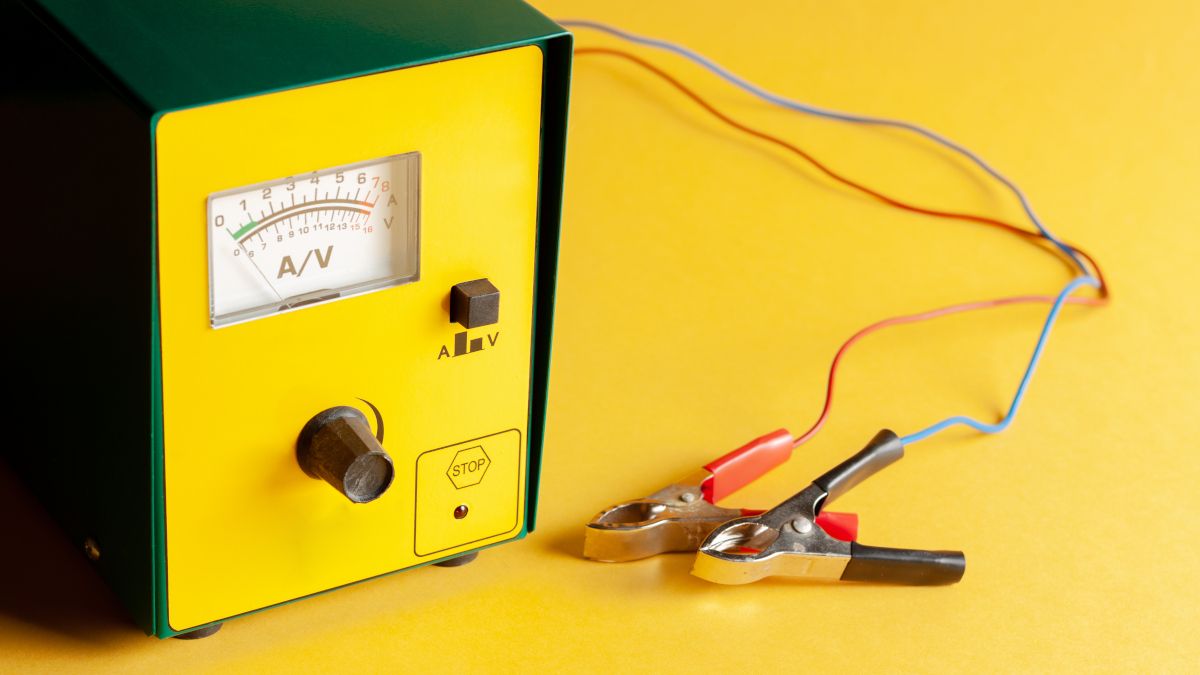Quick Links
Automatic Voltage Regulation (AVR) is a term commonly associated with electrical devices like UPSes, stabilizers, and generators that make use of voltage regulators. But what does it mean, and how important is it?
What Is Voltage?
Before getting into the nitty-gritty of the topic, it's important to understand voltage, the very unit AVR is built upon. Voltage or Electromotive Force (EMF) is measured in Volts (V). It's the pressure from a power source in an electrical circuit that pushes charged electrons (current) through a conducting loop.
In simpler terms, voltage signifies the work or energy needed to move a unit of charge between the two points. For example, if you connect a lightbulb to a battery's negative and positive terminals by wires, voltage will be the energy that pushes current from the negative terminal through the battery and towards the positive terminal.
Now that you know what voltage is all about, let's get into AVR properly.
What Is AVR, and Why Is It Important?
An automatic voltage regulator is a device that keeps the voltage supply to electrical equipment constant. It serves as a buffer for voltage fluctuations, delivering a reliable flow of power at all times. In other terms, it turns fluctuating input voltage levels from a power source into constant output to the connected load. Without AVR, your appliances would be susceptible to damage from sags, spikes, or surges, shortening your appliances' life spans.
Voltage regulators are found in systems like automobile alternators, central power station plants, stabilizers, computer power supplies like UPSes, and pretty much anywhere electricity is needed. In a UPS, for example, the AVR controls high and low voltages and stabilizes incoming AC signals to maintain a set output without resorting to battery power. This reduces the likelihood of data loss, system crashes, or flat-out equipment damage. It also significantly increases the UPS's battery life.
What to Know When Shopping for Devices With AVR
When buying a device with AVR, whether it's a UPS, stabilizer, or generator, there are only a few things you need to consider. That's because the bulk of the specifications---impedance, load compatibility, and voltage accuracy---are mainly relevant to manufacturers of UPSes, stabilizers, and generators, or to companies purchasing custom-made devices.
As an everyday consumer buying a simple powering device for personal use, you should look at the input voltage range, which should be broad enough to accommodate both high and low voltage fluctuations. Many regulators will have a wider low voltage range than high voltage, as line voltages tend to drop more than they increase. For example, a regulator might be able to correct voltages as low as 125V--165V (a 40V difference) and as high as 250V--270V (a 20V difference) to optimal values of 200-230V.
This will allow for more low correction than high correction. The wide range also makes the regulator better able to protect your devices in cases of extremely low or high input voltages. In addition, a good AVR should be able to cut off the power supply automatically when necessary, such as when the voltage values fall below or above the correction range of the UPS.
Keep in mind that while the range examples above show numbers that are common in Europe, most people in the US will be looking at much smaller numbers. This is thanks to the 120V system used in North America compared to 240V in Europe. So, an AVR with a 90V to 140V input range for 120V output would be ideal. However, as a general rule, a wider input range is usually better so long as the output is within the normal values for your location.
Another feature you should consider when shopping would be the ability to delay the output power supply for a few minutes. Commonly called time delay, it's essential in areas prone to power failures, as a sudden restoration could damage connected appliances due to excessive voltage. Or, in the case of refrigerators, air conditioners, and other devices with compressors, it can prevent the compressor gasses from neutralizing, resulting in appliance failure. While most consumer AVRs have a built-in time delay, confirm it with your dealer if you're not sure.
Now you can put your knowledge to work choosing the right electronics to keep your devices powered and functioning. Be sure to check out our shopping guides to take advantage of the research we've done for you.

